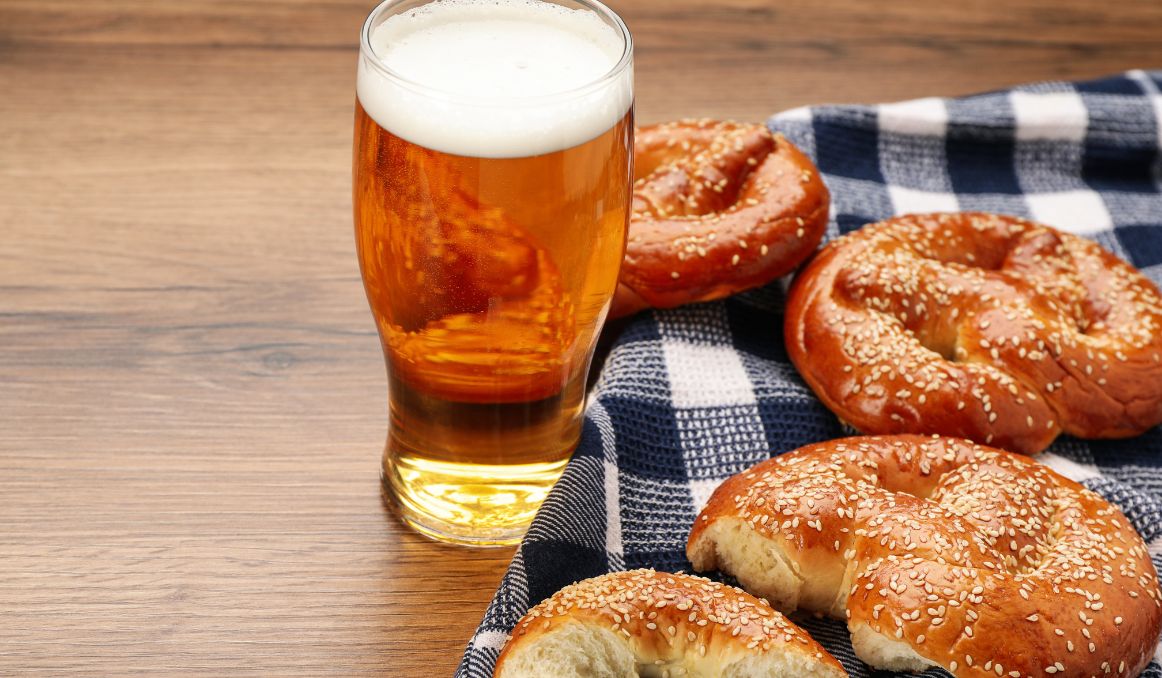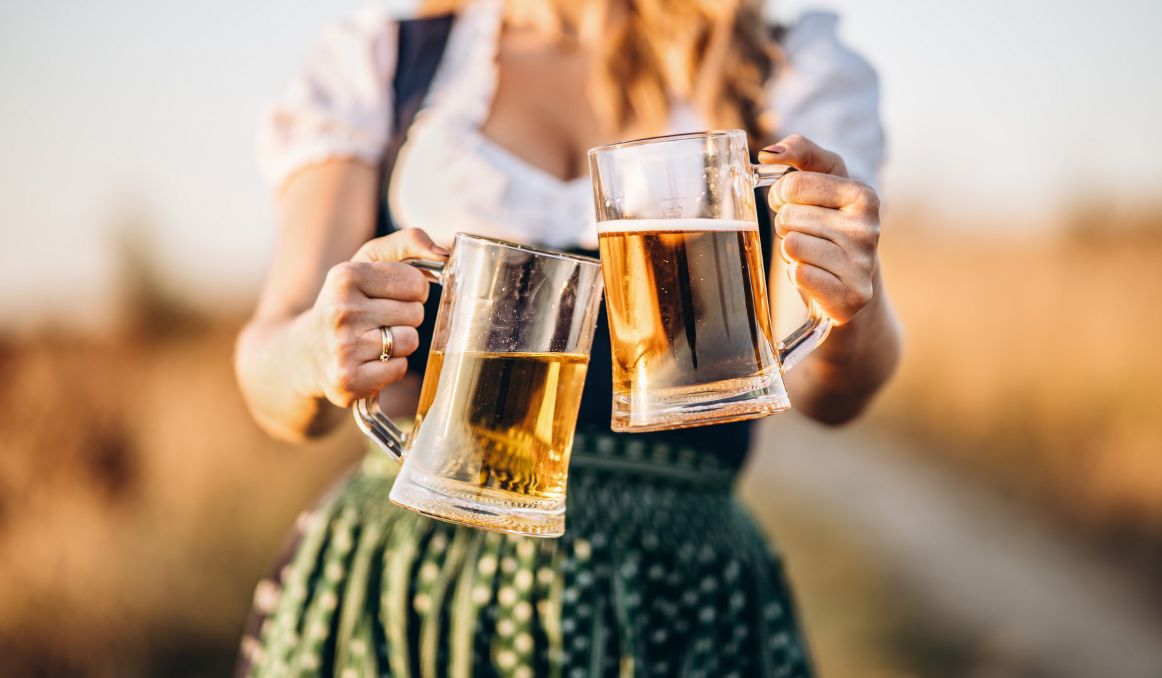What Is a Marzen Beer?
Marzen beer has become beloved across the globe, far away from its original humble origins in Germany. Marzen beer has also become synonymous with Oktoberfest, but not so fast.
There are distinct differences between the original Marzen beer and today’s Oktoberfest.
Differences worth exploring.
Marzen Beer

Marzen beer is the name given to beer rich in malt with a toasted bread aroma and flavor and a clean hop bitterness. Because this style of beer has traditionally been brewed in the spring, in the month of March, which is translated to Marzen in German, and then lagered over the spring and summer and served in the fall at Oktoberfest, the beer has come to take on the two names – Marzen and Oktoberfest.
But, beer lovers and brewers will tell you there is a difference between the traditional Marzen beer, or marzenbier, and Oktoberfest beer, or festbier, and it has a lot to do with America.
History of Marzen Beer
Marzen beer has an interesting origin and history.
Once, brewing beer during the late spring and summer was illegal in Bavaria, a region in Germany that got so hot during these months that beer would spoil.
So brewers began the practice of brewing beer before the heat arrived and then storing the beer to age for months in cooler caves in the mountains.
This process of aging beer at cooler temperatures is known as “lagering.”
Lagering
Lagering is a relatively new approach to brewing, only a few hundred years old, compared to ale which is thousands of years old, and it was actually Bavarian monks who discovered it.
Hoping to avoid spoiled beer, they thought to store their brew in these cooler caves and discovered an entirely new form of brewer’s yeast, Saccharomyces pastorianus, which ferments at significantly colder temperatures than its ale counterpart, Saccharomyces cerevisiae.
Once this yeast was discovered, it took off, and it worked out perfectly for brewers hoping to still make beer despite the heat.
Marzen Qualities
Marzen beer is brewed with Munich malt that is known for its bread crumb flavor and aroma as well as its strong, rich amber color. As it is aged for several months and those toasted grains are high in fermentable sugars, Marzen also comes out higher in ABV than a typical beer, at closer to 6%.
It is low in bitterness and comes across as perfectly refreshing for a late summer, early fall brew.
Oktoberfest
In 1810, the crown prince of Bavaria, later to become King Ludwig I, got married to Princess Therese. To celebrate the wedding, the city of Munich held a 5 day festival complete with food, beer, and even a horse race. The people loved the festival so much that the city repeated it the next year as an agricultural festival, and it quickly became an annual tradition.
Because Marzen beer debuts around the same time as the festival, the beer was soon associated closely with Oktoberfest and it became the official beer of the celebration.
Marzen beer was a hit particularly because dark beers were popular in the 19th century across Europe.
Today, only beers brewed by the 6 major brewers inside the city limits of Munich can legally be called Oktoberfest beers – Augustiner-Bräu München, Hacker-Pschorr, Hofbräu, Lowenbräu, Paulaner, and Spaten-Franziskaner-Bräu.
Every other beer must call their beer by another name. You will often see terms like “Oktoberfest style.”
What Has Changed

As people’s tastes changed over time, a newer, light lager was introduced, called festbier, or Oktoberfest beer. Festbier has many of the same qualities as Marzen, still higher in ABV, still made with low bitterness and refreshing drinkability.
The big difference is this brew is made with pilsner malt, a lighter grain that has a lighter roast, which of course produces a lighter lager.
It has only been a few decades since festbier has been introduce and adopted as the official Oktoberfest beer, and quite often you will find that the two are sold, marketed, and spoken of interchangeably.
In general, in American brewing, you will find many beers labeled as Oktoberfest beers that are much more likely to be Marzen beers, while in German brewing, you will know the Marzen beers from festbiers by the marzen label.
German breweries are sure to differentiate between Marzen beer and Oktoberfest beer, which makes sense as the two brews originated there.
To sum up, Marzen beers, Oktoberfest, and festbiers, all have many more similarities than they do difference, and much of the difference is chalked up to color and strength of body and flavor.
Either way, you cannot go wrong choosing either one of these now hugely popular and widely celebrated beers for a late summer/early fall beverage.
Marzen and Oktoberfest Beers to Try
Samuel Adams Octoberfest – Boston Beer Company
Easy to drink, a lightly carbonated amber brew with caramel malt taste, low in bitterness, and a hint of tartness.
Munsterfest – 3 Floyds Brewing Company
Marzen-style, rich and malty, with strong hop aroma.
Oktoberfest Marzen – Original Munchner Marzen – Paulaner Brauerei
Highly drinkable, a bit sweet, mild and elegant, clear and light-golden in color with a pleasant aroma that complements light hops.
Spaten Oktoberfest Ur-Marzen – Spaten-Franziskaner-Lowenbrau-Gruppe
A medium bodied beer that balances malt and hops well, rich in texture and underlying sweetness.
Oktoberfest – Great Lakes Brewing Company
Rich in toasty autumn aromas of toasted rye bread, light spice, and a touch of citrusy tanginess.
Try them all, explore the full range of Oktoberfest style beers, from Marzen to festbier, see what your palate prefers, and then choose which style you might like to mimic for your loyal fans.
You, and they, won’t be sorry you experimented with brewing a Marzen beer.
Cheers!
Passionate about the beer and/or wine making process? So are we! If you’re interested in finding out how you can use our technology to control fermentation and monitor your yeast, save work hours and improve the cost-efficiency of your business, drop us a line at [email protected] or check out our product pages:
- Oculyze BB 2.0 (Better Brewing) Yeast Cell Counter App + Hardware
- Oculyze FW (Fermentation Wine) Yeast Cell Counter App + Hardware
Also, you can now get access to a fully functional demo account to test your yeast via our Web App. Completely free of charge and with no commitment to purchase.
Sources:
- https://untappd.com/blog/10-best-oktoberfests-maerzens-of-2021/1327
- https://www.craftbeer.com/styles/german-style-marzen-oktoberfest
- https://www.alcoholprofessor.com/blog-posts/marzen-beer
Stay on top on important fermentation insights – subscribe to our monthly newsletter and receive a hand-picked selection of our most relevant articles straight to your inbox.
Never miss a beat and get real time updates with a new article each workday by subscribing our social media channels.
Instagram | Facebook | Twitter | YouTube


